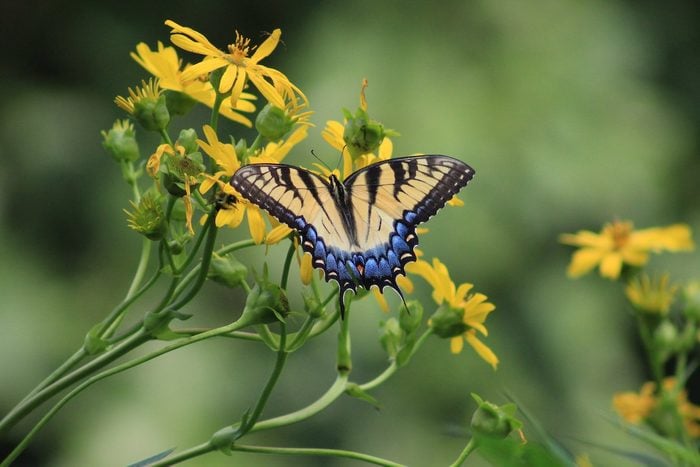
A Wildflower Garden for Butterflies
Butterflies and wildflowers evolved together in a perfect relationship. The wildflowers bloom at different times, emerging as butterflies begin to feed and breed in spring, and dying off as winged beauties migrate south or begin hibernation. In return, butterflies pollinate the plants as they travel through. Whether you want to plant a few square feet or a whole meadow, these seven wildflower picks are popular among many butterfly species. Be sure to choose flowers native to your area. Visit wildflower.org or contact your local county extension office for advice. Check out these top 10 host plants to attract more caterpillars and butterflies.
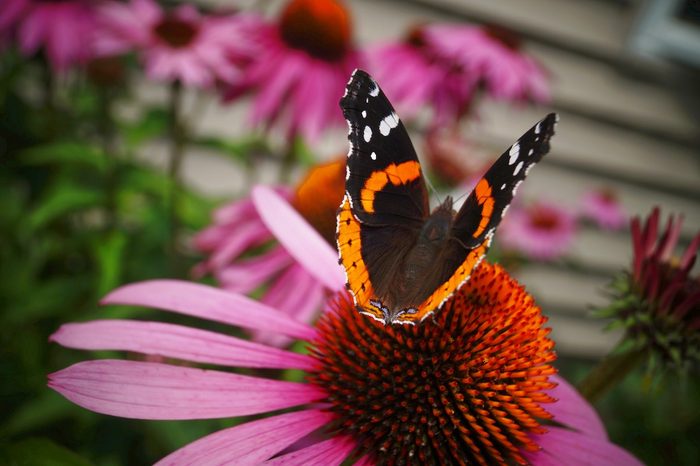
1. Purple Coneflower
(Echinacea spp.)
These tall, proud perennials are beloved as cut flowers. But be sure to leave some for the butterflies! Deadhead coneflowers often to encourage new blooms, especially early in the summer. Learn more about why birds and and butterflies love coneflowers.
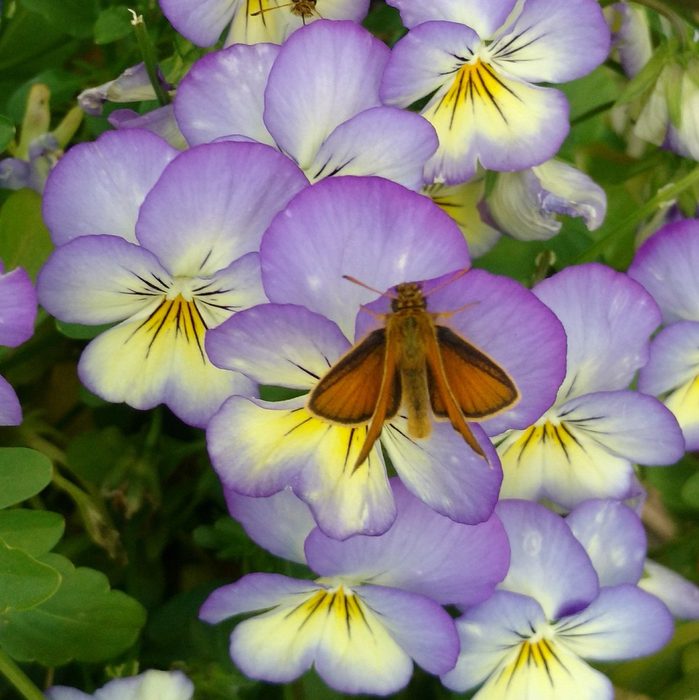
2. Wild Violet
(Viola spp.)
These petite but assertive blossoms are often considered a pest in lawns and cultivated gardens. Don’t root them out altogether, though. Wild violets serve as host plants for many fritillary butterfly caterpillars. Let them spread in your wildflower garden and look out for little spiky, but harmless, caterpillars chewing happily on the low leaves and purple blooms. These are our favorite purple flowers for the garden.
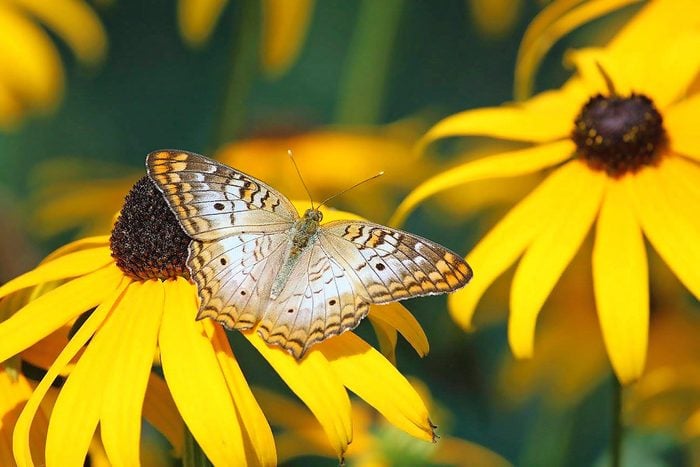
3. Black-eyed Susan
(Rudbeckia spp.)
Rudbeckias are members of the coneflower family. Black-eyed Susans (R. hirta) are the most well known. There are many other native species worth growing, though. These sturdy stalwarts are biennial, waiting to bloom the second year after planting from seed. This is the difference between annuals and perennials.
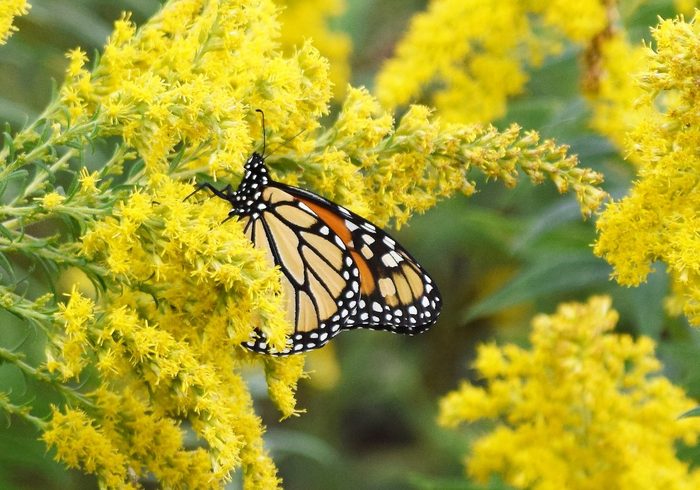
4. Goldenrod
(Solidago spp.)
Ignore the common myth that goldenrod makes you sneeze. (That’s likely just ragweed, which usually blooms at the same time.) These slender gold spears are another fall favorite for butterflies. Small varieties like Ohio goldenrod (S. ohioensis) are ideal for compact gardens. These butterfly flowers are easy to grow from seed.
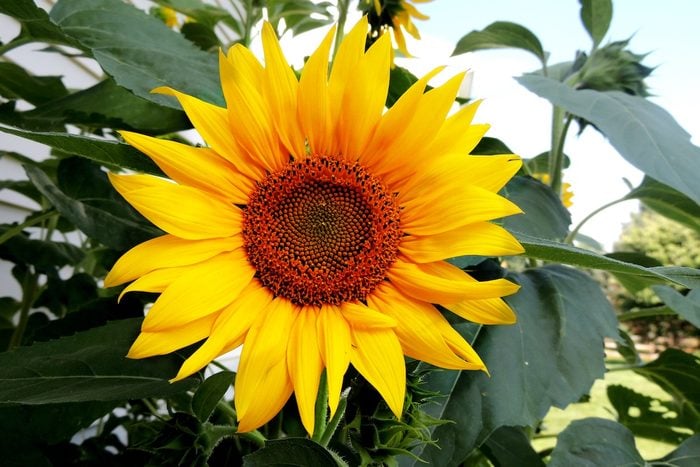
5. Sunflower
(Helianthus spp.)
When you think about this beloved wildflower, you probably think of common sunflower (H. annuus), native to the West and grown all over the country. But there are many other members of this family, like the western sunflower (H. occidentalis) which is perfectly suited to containers or tiny plots.
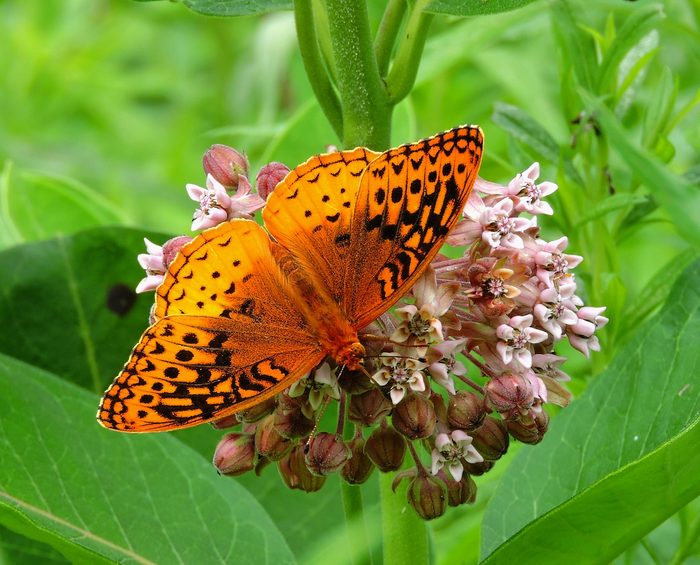
6. Milkweed
(Asclepias spp.)
Monarchs need milkweed, but many other butterfly species extract nectar from this widespread wildflower, too. Common milkweed (A. syriaca) grows well in much of the country. Seek out other native varieties if you’re in the West or Southeast.
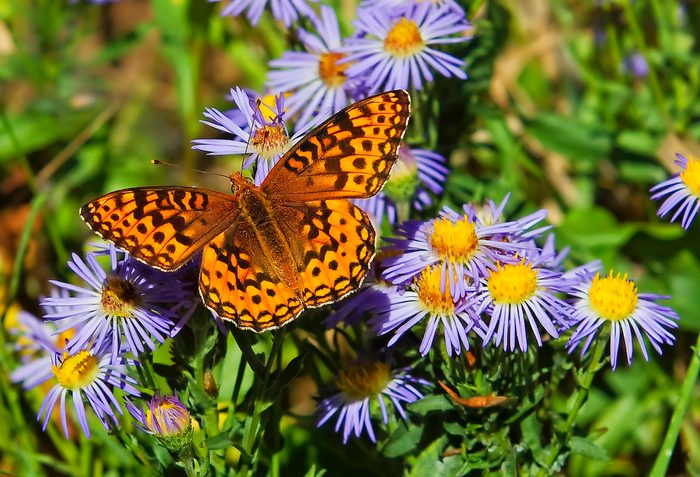
7. Aster
(Symphyotrichum spp.)
Fringed aster flowers help extend butterfly season well into fall. Some butterflies overwinter in the North and need nectar flowers right up until the first frost. Most asters prefer sun but some tolerate a little bit of shade, so plant in a bright spot. Here’s more fall flowers that attract butterflies.
